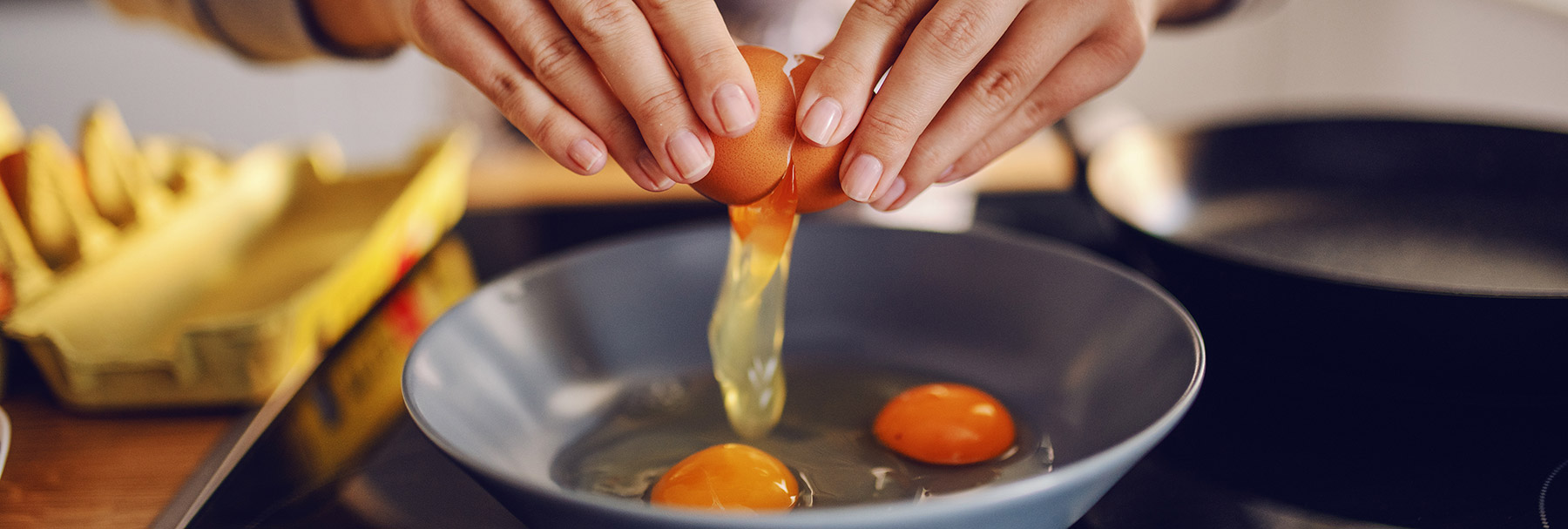The Inside Scoop on Protein

Protein plays a starring role in most American diets. After all, what’s more American than a big juicy steak?
It may sound like heresy, but protein is not the be-all and end-all of eating. “Protein provides fuel and strength, but it is just one piece in a nutritionally balanced diet. About three-quarters of Americans meet or exceed the recommended protein requirements from meat, poultry, and eggs. “There can be drawbacks to eating too much protein in your diet. It’s important to eat a daily amount that is appropriate for you and your health. More is not always better,” says Nicole Rittman RD, CSO, LDN, a dietitian at the University of Miami Health System.
The “real men eat meat” argument doesn’t hold up, either. A recent University of Miami study found that men who follow a plant-based diet have the same testosterone levels as men who eat a traditional meat-based diet. “There are so many nutrient-dense options that have less fat and calories than red meat. You should get protein from a lot of different food sources,” Rittman says.
Loading up on protein may also shortchange us on other vital elements of nutrition, such as fiber, vitamins, and minerals.
What is protein?
Your sixth-grade science teacher taught you that protein has multiple essential amino acids that together help build muscle mass. Like fats and carbohydrates, protein is a macronutrient, meaning we need lots of it to function. Protein fuels us with energy in the form of calories, strengthens our immune system, and helps our metabolism function. And we’ve all experienced that satisfyingly full feeling after a protein-rich meal.
Protein comes from four sources:
- Animal: beef, pork, poultry, lamb, game meats, seafood, dairy, eggs
- Plant: fruits, vegetables, beans, peas, lentils, nuts, seeds, spirulina, soy products
- Processed: protein powders, “power bars,” and other convenience “sports” foods
- Whole grains: all grains contain some protein; oats, buckwheat, and cornmeal contain higher amounts
How much protein do I need?
About 10-35% of your overall calories should come from protein. Including a palm-sized portion of protein with each meal and a smaller protein-based snack can help you meet this goal. But it is best to space your protein consumption throughout the day. Don’t consume too much at one meal. “Your body cannot store excess protein you eat as it; instead, it may be stored as fat. Also, if you eat high quantities of protein over a long period of time, you can put added strain on your kidneys,” Rittman says.
Rittman recommends getting your protein from:
- Poultry (preferably white meat)
- Lean meats
- Seafood
- Plants
- Grains
Speaking of seafood, most Americans are missing out.
“Almost 90% of Americans don’t meet the requirements for seafood consumption. Seafood provides omega-3s, such as docosahexaenoic acid (DHA) and eicosapentaenoic acid (EPA), which are essential for brain health. However, it’s not being utilized in our diets as much as it should be. We’re missing out on vital nutrients.”
Salmon, trout, mackerel, oysters, mussels, and crab contain high amounts of omega-3s. If you’re pregnant or trying to conceive, eat seafood known to have less mercury: salmon, sardines, anchovies, pollock, flounder, cod, shrimp, oysters, scallops, or crab.
What about the high protein, high fat, low carbohydrate ketogenic diet? If you follow a keto meal plan, Rittman suggests eating nutrient-dense proteins that are low in saturated fats, such as poultry, seafood, and leaner cuts of red meat. Bacon and sausage are popular mainstays of this diet but are not heart-healthy, especially when consumed regularly. Processed, fatty meats are also associated with an increased risk of certain types of cancer.
Vegans and protein
Tell someone you’re a vegan, and you’re likely to hear, “Where do you get your protein?”
“People associate ‘good protein’ with animal protein,” Rittman says. “Plant-based proteins have a different profile, but you can maintain appropriate protein intake on a vegan diet.” For vegans, that means eating a variety of proteins, such as legumes, soy, nuts, seeds, nut milk, nut butter, and whole grains, in addition to fruits and veggies. She also notes that the Academy of Nutrition and Dietetics found that adequately planned vegetarian and vegan diets are healthy and nutritionally adequate and may help prevent certain diseases.
There is an important caveat. “Vitamin B-12 is closely tied to animal-based proteins,” she says. “It is not found in plants.” That’s easily remedied by taking a B-12 supplement or eating foods fortified with B-12, such as nut milk, cereals, and bread. Nutritional yeast also provides some vitamin B-12 when added to the diet.
Like her fellow dietitians, Rittman advises moderation and variety. “We can receive nearly all of the vitamins and minerals we need from food.” Protein is just one piece of the nutritional picture. The more interesting the picture on your plate, the better your body will function.
Nancy Moreland is a regular contributor to UMiami Health News. She has written for several major health care systems and the Centers for Disease Control and Prevention. Her writing also appears in the Chicago Tribune and U.S. News & World Report.
Tags: Nicole Rittman, nutrients, protein, well balanced diet
